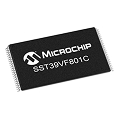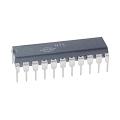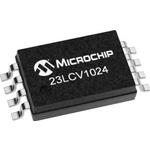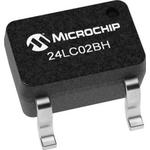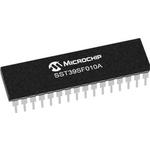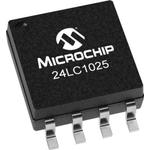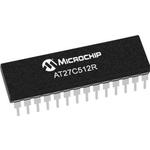Computer memory devices, part of the integrated circuits (ICs) family, store program code, configuration data, and user information so systems boot, log events, and update reliably. The category spans volatile Random Access Memory (RAM) such as Static RAM (SRAM) and Synchronous Dynamic Random Access Memory (SDRAM, including Double Data Rate (DDR)) along with non-volatile options like Read-Only Memory (ROM), Flash, Electrically Erasable Programmable Read-Only Memory (EEPROM), Ferroelectric RAM (FRAM), and Magnetoresistive RAM (MRAM). Capacities range from kilobits to gigabits with serial or parallel interfaces, while packages such as small-outline integrated circuit (SOIC), thin shrink small-outline package (TSSOP), and ball grid array (BGA) fit a wide range of assembly methods.
How to Choose the Right Computer Memory Devices
Start with the memory type and architecture: select SRAM for low-latency caches and buffers, SDRAM or DDR for high-throughput working memory, and non-volatile devices (EEPROM, NOR or NAND Flash, FRAM, MRAM) when data must persist through power loss. Your interface and voltage need to match your host system. Serial Peripheral Interface (SPI) and Inter-Integrated Circuit (I2C) minimize pin count, Quad Serial Peripheral Interface (QSPI) raises throughput, and parallel buses serve bandwidth-hungry designs. Common families ship in 1.8-volt and 3.3-volt variants.
Packaging and reliability should align with your environment by checking footprint constraints, write endurance, data retention, temperature range, and qualifications such as Automotive Electronics Council (AEC) Q100. Account for error correction code (ECC) support and sector-erase sizes in your firmware workflow.
Popular Applications for Computer Memory Devices
Purchasing teams, design engineers, and contract manufacturers use these components for new builds, line ramps, and sustaining production. Industrial automation relies on EEPROM and Flash for firmware, parameter backup, and logging, while consumer devices pair SDRAM or DDR with Flash to balance speed and persistence. Automotive electronics select qualified memory ICs for infotainment, body control, and advanced driver assistance systems (ADAS), and telecom gear uses high-bandwidth DDR with durable Flash for routing tables and event logs. Internet of Things (IoT) and edge nodes favor low-power serial Flash and FRAM to store settings and sensor data without draining batteries.
Why Buy Computer Memory Devices from Online Components?
Buying computer memory devices from Online Components means partnering with a trusted, authorized distributor that combines reliability with genuine value. Since 1999, we've built our reputation on stocking the right parts at competitive prices and shipping them the same day you order. With over 400,000 part numbers available and a focus on interconnect, passive, and electromechanical components, we help engineers and purchasers find what they need without delays or inflated costs. Our global flat-rate shipping makes purchasing straightforward regardless of location, and our low minimum order quantities let you buy in whatever way works for your project. At Online Components, you don't just get memory devices. You get confidence that your supply chain is reliable.
Computer Memory Devices: What You Need to Know
What's the difference between volatile and non-volatile memory ICs?
Volatile memory such as SRAM and SDRAM/DDR loses data when power is removed, which makes it suited for fast working storage rather than long-term retention. Non-volatile devices like ROM, Flash, EEPROM, FRAM, and MRAM hold state without power. Many designs combine the two: Dynamic Random Access Memory (DRAM) for speed and Flash for firmware, updates, and logs.
NOR vs. NAND flash: when should each be used?
NOR flash delivers fast random reads and execute-in-place for boot code and small images. NAND flash scales to very high densities, so it suits mass storage and data logging. It's common to boot from NOR and store bulk data in NAND.
How do speed ratings and interfaces affect system performance?
Clock frequency, bus width, and latency drive throughput and responsiveness, while the interface dictates board complexity and pin usage. Parallel DDR parts deliver high bandwidth; SPI and QSPI offer simpler layouts at moderate speeds; I2C trades speed for low pin count. DDR5 is currently the mainstream standard, with DDR6 in development for release in 2025-2026. Validate timing against your controller's datasheet to avoid bottlenecks.
contact us
 English
English
 Chinese
Chinese
 Italiano
Italiano
 Portuguese
Portuguese
 Deutschland
Deutschland
 French
French
 Russian
Russian
 Japanese
Japanese
 Turkish
Turkish
 Korean
Korean
 Spanish
Spanish
